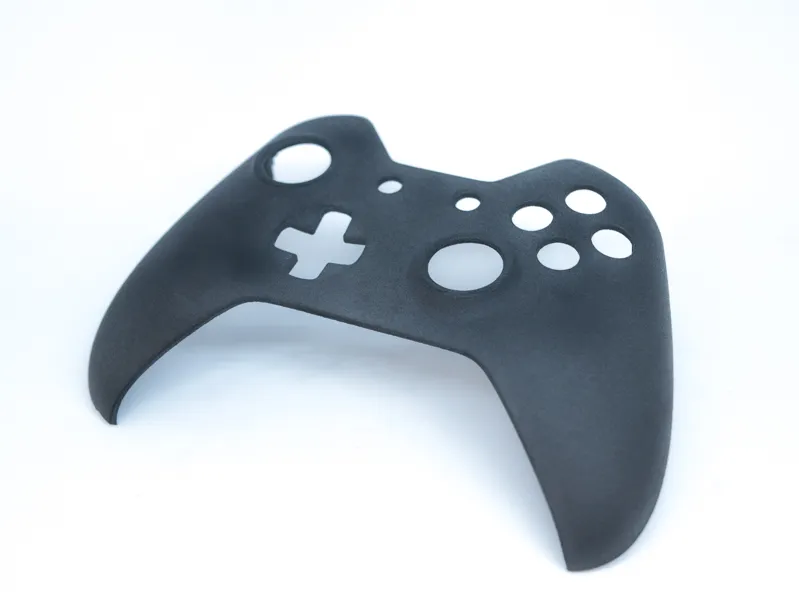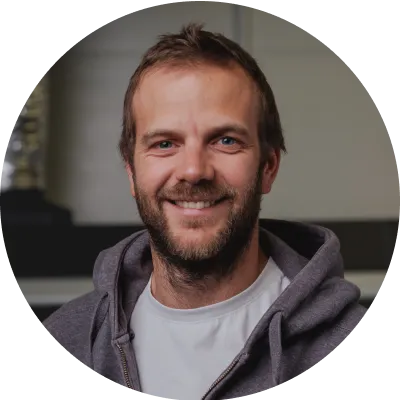About 70% of all our projects are enclosures and parts for electronic devices. The HP Multi Jet Fusion printing technology is ideal for this type of application, especially in low and medium-series production.
If you are considering using this technology in your project, this article will describe step by step the process of ordering and implementing the housing or parts for devices in MJF 3D printing.
What makes Multi Jet Fusion printers so suitable for device enclosures?
The first MJF printer was launched by HP in 2016 when 3D printing was already relatively widespread. It was designed to simplify, accelerate and reduce the cost of short- and medium-series production of plastic elements and to solve some of the crucial problems related to, for example, 3D printing in SLS technology.
So what are the critical advantages of MJF printers in implementing hardware projects?
- Swift project implementation (a few days compared to over two months in the case of injection technology)
- High profitability for volumes below ~1000 pieces
- Possibility of any changes in the design before each printing
- Economical and ecological solution (printing uses 20% new powder and 80% previously used)
- It can be used across many industries (polyamide is resistant to water and certified as safe in contact with the skin)
In many cases, 3D printing becomes the only solution that allows you to implement a project within a fixed budget, which is a common situation in the case of specialized equipment. Thanks to the possibility of producing a series of, for example, 20 pieces, a manufacturer who creates an innovative device can realistically test his product on the market at a relatively low cost and consider further steps as a business.
3 steps to hardware project implement with MJF technology
Below we will describe what this process looks like in the case of our company. As a standard, the entire process is completed in a few weeks. However, just the printing of a previously proven design, in exceptional situations, we are able to finish in less than 24 hours.
Here are the individual steps of the process:
1. Creating a design file for 3D printing
If the customer already has his own model, we must check whether it is suitable for 3D printing. Some elements have to be made a bit differently to ensure adequate strength. If the client does not have a ready-made project, we help to create it. The duration of this process depends on many factors and may last from several days to weeks.
We also often suggest economic changes. Unlike injection technology, with 3D printing, we can afford practically any shape, including hollow elements. Thanks to this, you can significantly save on the project while maintaining the strength required for a given piece, e.g., using the so-called honeycomb. At this stage, decisions are made not only about the shape itself but also about the finishing of the elements, smoothness and color.
Of course, when this is another printout of a previously tested project, we skip this step entirely, although it is always a good time to introduce corrections.
2. Producing a prototype or a test series (3-5 days)
W zależności od sytuacji, po zakończeniu projektowania przechodzimy do wydruku projektu prototypu lub serii testowej. Ze względu na niski koszt realizacji nawet jednej sztuki, technologia ta świetnie się nadaje do projektowania iteracyjnego, kiedy zakładamy, że zbierając opinie użytkowników i testując produkt, stale będziemy wprowadzać poprawki.
Po przetestowaniu prototypu lub pierwszej serii produktów, zazwyczaj przechodzimy do ostatecznych szlifów projektu i druku większych serii.
Depending on the situation, after the design is finished, we go to printing the prototype project or a test series. Due to the low cost of even one piece, this technology is excellent for iterative design, when we assume that we will constantly make corrections after collecting user feedback.
After testing the prototype or the first series of products, we usually move to the final touches of the design and printing of the more extensive series.
3. Pricing and printing planning
Wstępne projekty wyceniane są na podstawie prostej kalkulacji w naszym narzędziu lub indywidualnie w przypadku skomplikowanych modeli. Następnie umawiamy konkretne terminy dostarczenia części. Jeśli klientowi wyjątkowo zależy na czasie, zazwyczaj jesteśmy w stanie przyspieszyć proces, ale wpływa to na wycenę. Rekordowe dostarczenie części w naszym przypadku trwało około 12 godzin.
Jeśli jednak klient jest gotów na zamówienie większych wolumenów lub zaplanowanie zamówień na kolejne miesiące, jesteśmy zawsze w stanie zaproponować bardziej atrakcyjne ceny. W przypadku większych zamówień, bierzemy zaliczkę w wysokości 50% całego zamówienia.
Preliminary projects are priced based on a simple calculation in our tool or individually in the case of complex models. Then we arrange specific dates for the delivery of parts. If a client is extremely time-conscious, we can usually speed up the process, but this affects the pricing. In our case, the fastest delivery of parts took about 12 hours.
However, we can always offer better prices if the customer is ready to order larger volumes or plan orders for the next months. In the case of larger orders, we take an advance payment of 50% of the entire order.
3D printing is an ideal method in modern production and management methodologies
Krótki czas dostarczenia części oraz niska cena przy niedużym wolumenie to czynniki, dzięki którym druk 3D doskonale sprawdza się zwinnych metodologiach, jak np. w JIT (just-in-time manufacturing), czy DDMRP (Demand Driven Material Requirements Planning).
Pozwala ona na tworzenie części tylko wtedy, gdy jest na nie potrzeba i w dokładnie takiej ilości, na jaką jest zamówienie. Dzięki temu firmy nie muszą zamrażać środków w zasobach, które nie wiadomo, kiedy (i czy w ogóle) będą potrzebne.
Jeśli uważasz, że druk 3D będzie odpowiednią metodą w Twoim przypadku, skontaktuj się z nami, a pomożemy Ci w Twoim wdrożeniu.
Short delivery times and low prices for small volumes are the factors that make 3D printing perfect for agile methodologies, such as in JIT (just-in-time manufacturing) or DDMRP (Demand Driven Material Requirements Planning).
It allows you to create parts only when they are needed and in the exact required quantity. Thanks to this, companies do not have to freeze funds in resources that might never be used after all.
If you think that 3D printing will be the right method in your case, please contact us, and we will help you with your implementation.


